AC Outlets
Since it sounds like you aren't that familiar with electricity, I would recommend taking a standard power strip and embedding it into the desk. If you wanted, you could remove the top plastic shell of the strip and cut out your own from wood to match the desk. I only suggest that since you mentioned your carpentry skills. But you have to ensure all of the internal contact and master switches will still work properly and cannot possibly short.
If you wanted to try and wire your own electrical outlets, you could do so using the standard outlets you find in a hardware store or even Walmart. The wire gauge specified by the National Electric Code (NEC) is 14 gauge for a 15A breaker, 12 gauge for a 20A breaker, and 10 gauge for a 30A breaker. I think most power strips use 14 gauge internal wiring. Also note, that since these desk outlets will be powered from one regular wall outlet, the current through the circuit of that wall outlet will include all of the current used through any of the desk outlets meaning you shouldn't try to power anything too "big" from these desk outlets. Also, remember to never plug one type of spliiter (power strip, 3x1 or 6x2 outlet splitter, etc) into another for the aforementioned reason.
Outlet Wiring

- Ground Wire (Green or Pure Copper) connects to the little screw in one of the corners.
- Neutral (White Wire) goes to the silver terminal - should be the
longer of the two outlet slots.
- Hot (Black Wire) goes to the gold terminal - should be the shorter of
the two outlet slots.
- Leave the removal plate on side terminals in place to keep the two outlets in parallel.
USB Ports
USB operates at 5V DC. Typical ports are nothing more than voltage rectifiers/converters to give a steady output at the desired level. It is up to the device being plugged into determine how to regulate the current flow from the outlet. While there are many commercial outlets available which have USB built in (Like this, for example) they greatly increase the cost of the outlet.

On top of the added cost, they waste power. The port is regulating the voltage regardless of a device being plugged in or not - similar to the waste from leaving a standard phone charger plugged in all the time. In addition, they can make it more difficult to use an outlet for any other purpose unless small plugs are used. I would recommend you get a common powered USB Hub like this:

The thing to note about using USB is the available amount of available current. From a computer, the default is 100mA. Once a device has gone through the "enumeration process," much more current can be drawn. This process is talked about in this relevant question. However, since you are using an external, powered USB hub rather than the ports on a computer, this can usually be bypassed to allow charging (or powering) of multiple devices from the hub. In fact, you will not need to connect the USB hub to a computer at all, just power it from one of the electrical outlets. Although, some hubs may still require enumeration before sourcing larger currents - I'm not entirely certain on that. You might want to wire an outlet under the desk for this purpose to avoid extra cables on top. You could also get a switched outlet so you can shut off the USB ports when you aren't using them to avoid wasted power.


